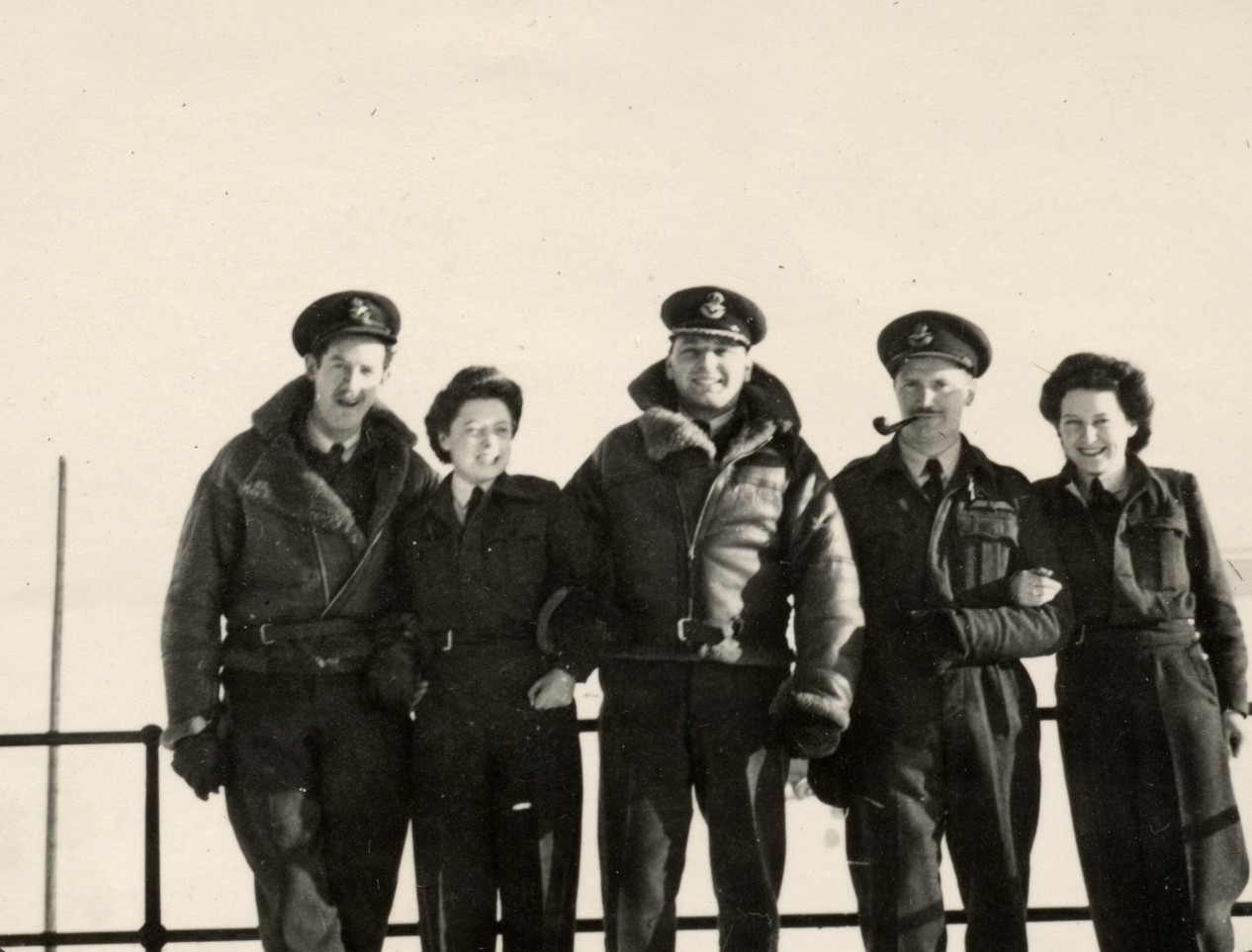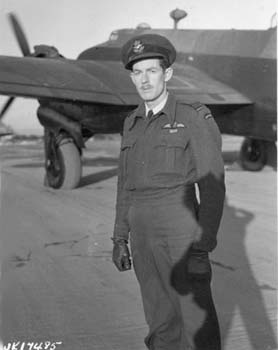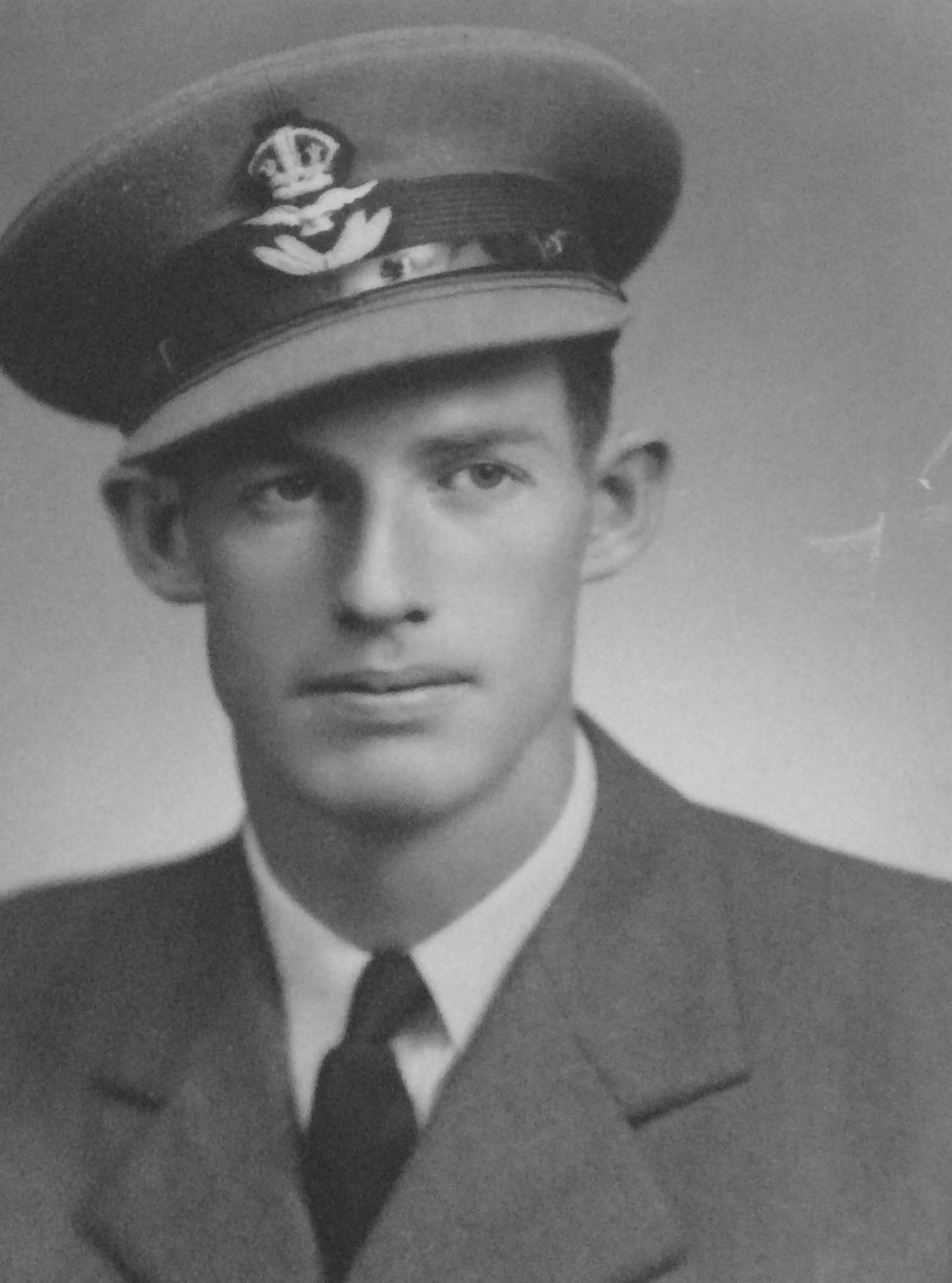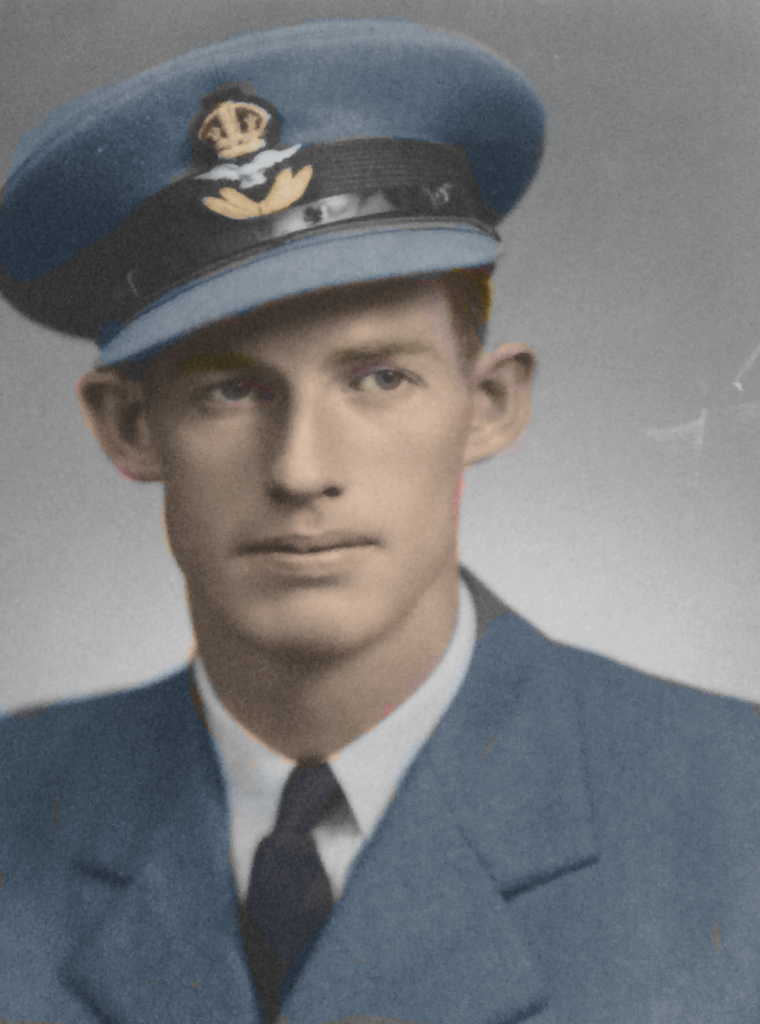After I had paid homage to John Austin on my blog about RCAF 420 Squadron, I wanted to pay homage to Wing Commander William Gerald Phelan with the help of his grandson Colin who had found that blog last month. This is what I had written on that blog.
Hello Pierre. I am one of the grandchildren of Mr. Phelan. I am thrilled to have found these photos, I sent these links to my mom tonight. She had never seen them before and they made her cry. Thank you so much for your work in compiling and maintaining this page!
PHELAN, F/O William Gerald (J27718)
– Distinguished Flying Cross
– No.425 Squadron
– Award effective 19 September 1944 as per London Gazette of that date and AFRO 2274/44 dated 20 October 1944.
Born 7 February 1917 in Vancouver; home in Toronto; enlisted there 20 April 1942 and posted to No.1 Manning Depot.
To No.1 ITS, 29 August 1942; graduated and promoted LAC, 23 October 1942 but not posted to No.9 EFTS until 21 November 1942; may have graduated 5 February 1943 but not posted to No.16 SFTS until 6 March 1943; graduated and commissioned 25 June 1943.
To “Y” Depot, 9 July 1943. To United Kingdom, 15 July 1943.
Promoted Flying Officer, 25 December 1943.
Promoted Flight Lieutenant, 10 July 1944.
Promoted Squadron Leader, 5 August 1944.
Repatriated 2 September 1945.
Retired 17 October 1946.
Died 14 September 1970 as per DVA letter dated 23 October 1970. Medal presented at Buckingham Palace 29 June 1945.
RCAF photo PL-32718 (ex UK-14635 dated 13 September 1944) shows W/C Hugh Ledoux, recently appointed CO of No.425 Squadron, with two flight commanders – S/L Lionel Dupuis (left) and F/L Gerald Phelan (right).
Photo PL-33576 shows F/O W.G. Phelen (sic) (right) and F/L Real St. Amour.
RCAF photo PL-32755 (ex UK-14628 dated 9 September 1944) shows him alone.
Photo PL-41602 (ex UK-18125 dated 19 January 1945) shows commanders of No.420 Squadron – F/L F.S. McCarthy (Windsor, flight commander), W/C W.G. Phalen (sic) (Toronto, squadron commander) and S/L B.C. Motherwell (Vancouver, flight commander).
This officer has completed many sorties and has displayed exceptional skill and determination, qualities which were well in evidence when detailed for an attack one evening in July 1944. Early in the outward flight one of the engines became defective and had to be put out of action. In spite of this, Flying Officer Phelan was determined to complete the mission for which he had been detailed. Owing to the loss of air speed he knew that to follow the prescribed route would mean a late arrival over the target. He therefore altered course and, by the most direct route, went on to the target and executed a successful attack. On the return flight he skilfully controlled the use of the engines to conserve the petrol supply which had become much reduced and finally reached base. This officer has at all times displayed the highest standard of devotion to duty.
DHH file 181.009 D.1513 (Library and Archives Canada RG.24 vol.20600) has recommendation raised by W/C Lecomte, 26 July 1944 when he had completed 20 sorties (86 hours 30 minutes):
On the evening of July 6, 1944, Flying Officer Phelan was pilot of a Halifax bomber detailed to attack Coquereaux, France. Ten minutes after setting course from base, he discovered that the oil pressure in the starboard outer engine had become so low that there was no alternative to switching off the engine and feathering the propeller. With exceptional tenacity of purpose, he decided to continue to the target on the three engines. In order to maintain height it was necessary to change his petrol mixture from lean to rich. With the reduced airspeed it was difficult to reach the concentration point on time so Flying Officer Phelan, exercising unusual initiative, decided to fly a direct route instead of following the prescribed course. After encountering the main force of bombers he then put his aircraft into a gradual descent, thus maintaining the speed necessary to reach the target on schedule. Though the bombsight computer box was unserviceable, the target was bombed most successfully with the use of the sighting head. Continuing his magnificent display of airmanship, this officer brought his aircraft back to base despite the reduced petrol supply by again cutting off parts of the required tracks and by allowing a gradual loss of height.
Flying Officer Phelan’s initiative, skill and devotion to duty merit high praise. His fine offensive spirit and determination to complete his mission have been an inspiration to his crew. I recommend that his outstanding achievement be recognized by the immediate award of the Distinguished Flying Cross.
Epilogue
Wing Commander William Gerald Phelan’s grandson sent me these photos of his grandfather.



I have colourised this one for Colin.
There is not much information on the Internet about Wing Commander Phelan.
This was the only information I had. Something written in 1957 by Flight Lieutenant A.P. Heathcote, Air Historical Branch (Reference: The Roundel, Vol. 9, No. 3, April 1957)
The daylight half of Command’s mammoth mid-October smash at Duisburg finished a tour for Squadron Leader L.P.J. Dupuis, D.F.C., who, having begun his operational tour the previous February as a warrant officer, had risen to command a flight within 3 ½ months. His opposite number, Sqn. Ldr. W.G. Phelan, D.F.C., was posted in November to the other side of the field, to No. 420 Squadron, which he was soon to command. He was the sixth Alouette alumnus to take over another squadron.
End of what I had written…
There was so much information I had found since last month that I did not know how to publish all of it on RCAF 420 Squadron.
This is why this blog has been created.
The complete story here in a PDF file…

